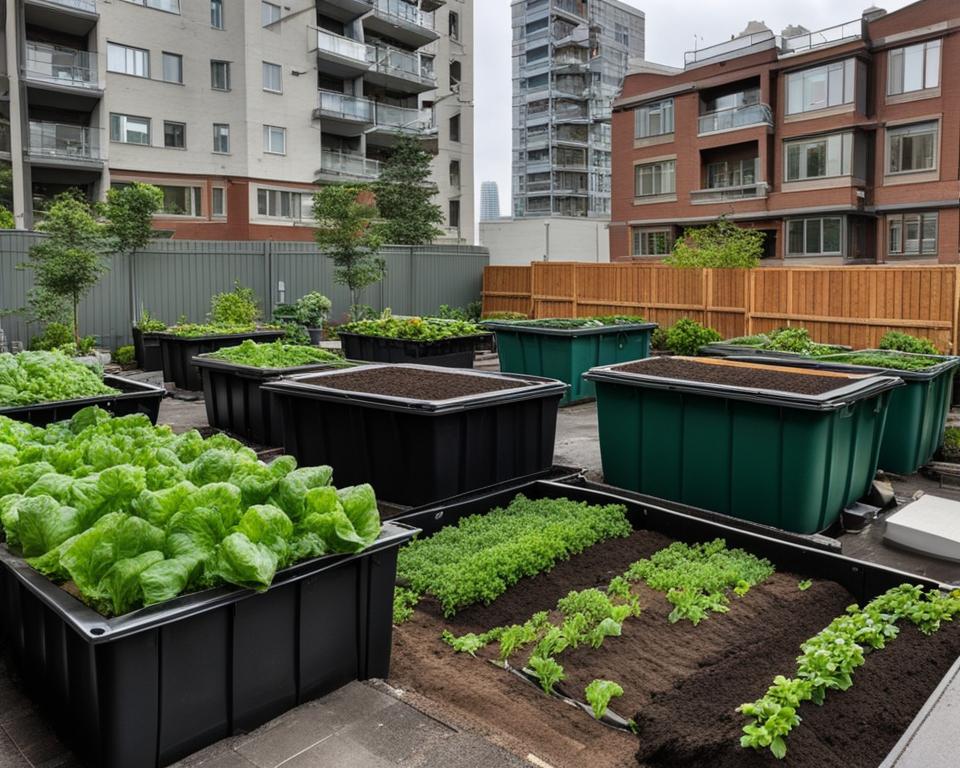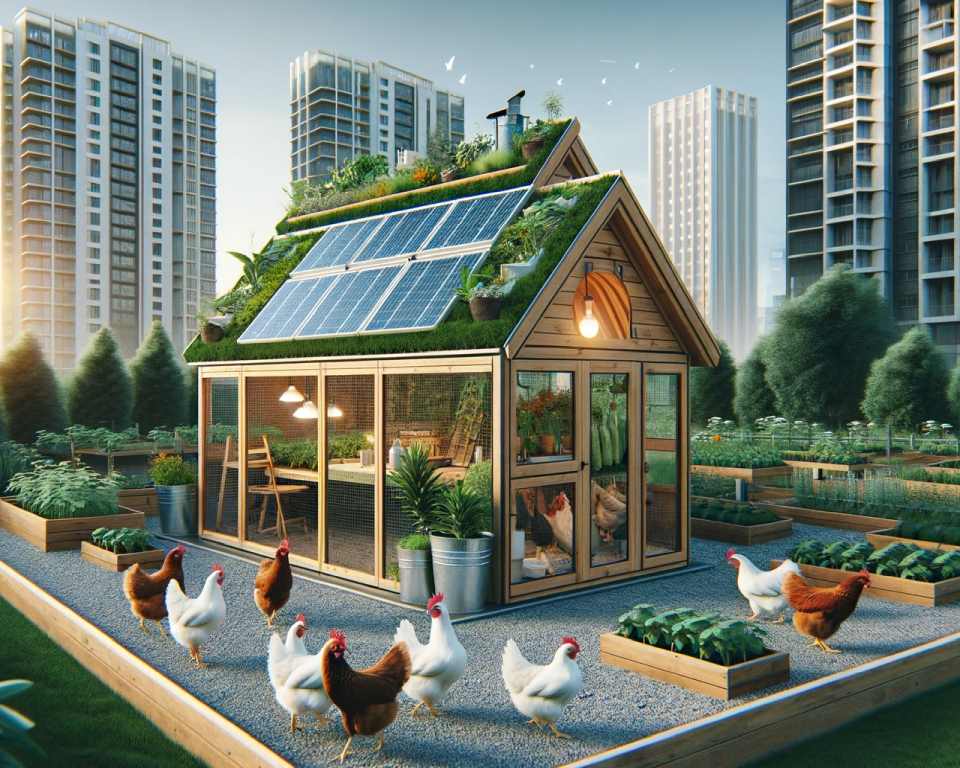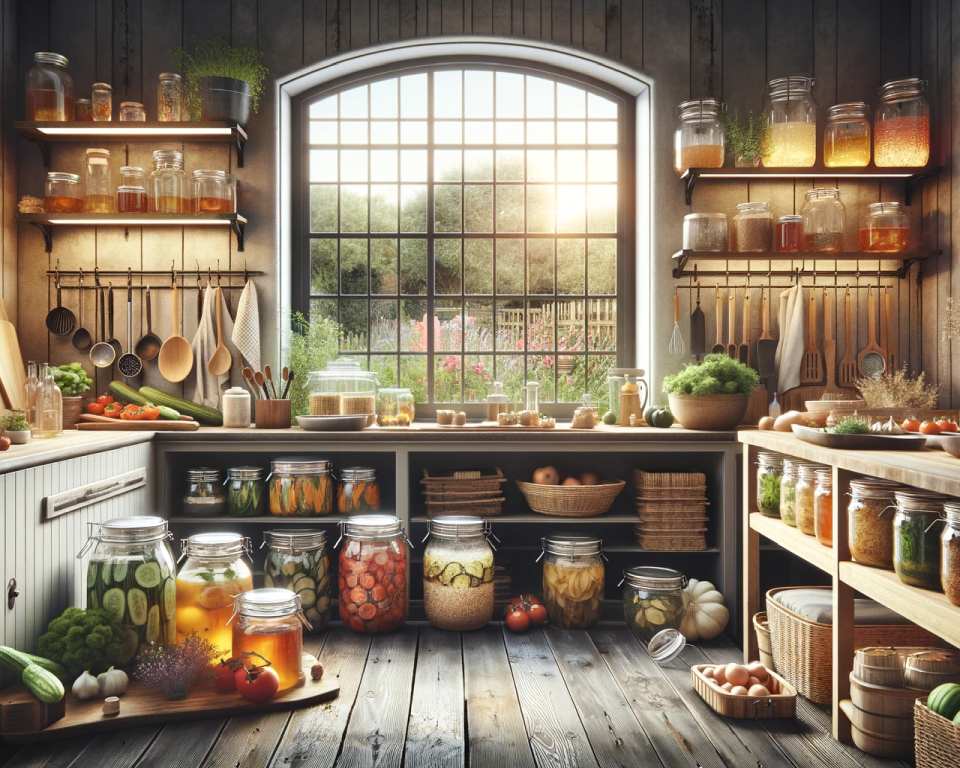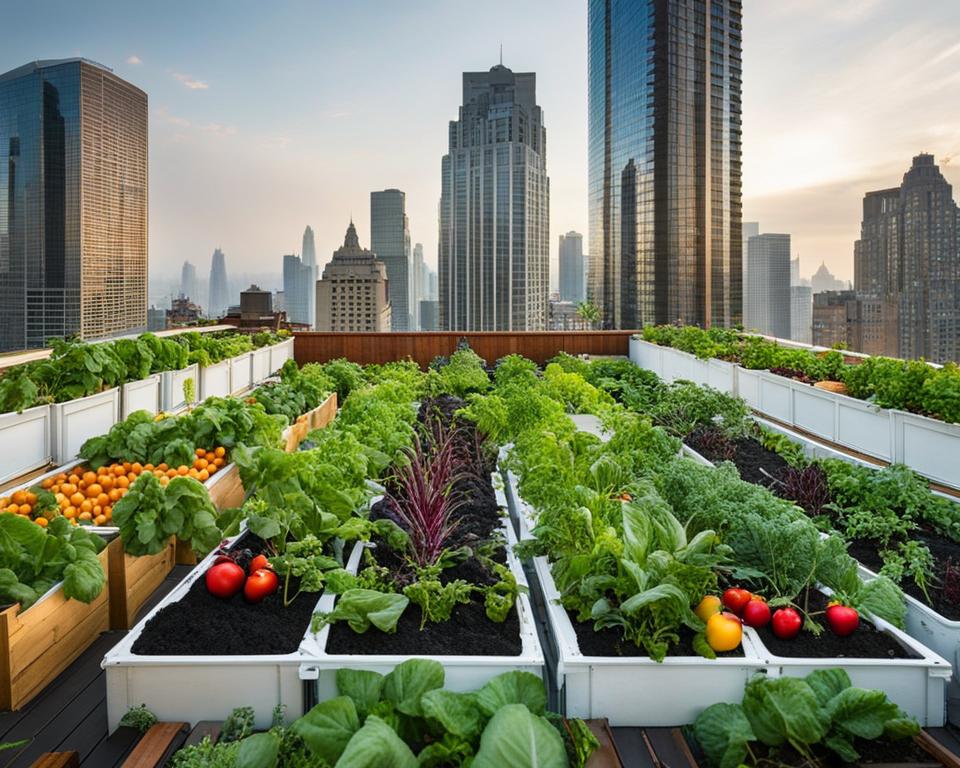A Guide to Homesteading in Urban and Rural Settings
Welcome to our comprehensive guide on homesteading in both urban and rural settings. Whether you live in the heart of the city or in the countryside, there are endless opportunities to embrace a self-sufficient and sustainable lifestyle. In this guide, we will explore urban homesteading ideas, rural homesteading tips, and everything in between.
Homesteading, at its core, is about reconnecting with nature and living in harmony with the environment. It involves producing your own food, reducing waste, and finding creative ways to be self-sufficient. Urban homesteading allows individuals with small spaces, such as backyard gardens or balconies, to participate in this rewarding lifestyle. On the other hand, rural homesteading provides an abundance of land for farming and livestock.
Urban homesteading is particularly attractive for beginners who want to embark on a sustainable living journey but have limited gardening space or resources. It involves techniques and projects that adapt to the urban landscape, allowing individuals to grow their own food, raise chickens, or engage in other homesteading activities within the constraints of city life.
Rural homesteading, on the other hand, offers a more traditional and expansive approach. It encompasses a wider range of skills and resources, including larger-scale farming, animal husbandry, and a deep connection with the natural world.
Throughout this guide, we will delve into the various facets of urban and rural homesteading, covering topics such as the benefits, challenges, and numerous ideas for both types of homesteading. Whether you’re a seasoned homesteader looking for new techniques or a beginner seeking inspiration, this guide aims to provide a wealth of information and resources to support your journey.
What is Homesteading?
Homesteading is a lifestyle that revolves around self-sufficiency, sustainable living, and reconnecting with nature. It is a way of life that involves producing a significant amount of your own food and living in an environmentally conscious manner.
Homesteading is often associated with farming on a smaller scale, typically to feed the homesteader’s family and community. By growing their own fruits, vegetables, and raising livestock, homesteaders aim to reduce their dependence on store-bought items while fostering a deeper connection to the land.
Self-sufficiency is a fundamental principle of homesteading. It encourages individuals to cultivate their own sources of food and energy, relying less on external resources. By developing skills such as gardening, preserving food, and implementing sustainable practices, homesteaders become more self-reliant and resilient.
Sustainability is another key aspect of homesteading. Homesteaders strive to live in harmony with nature, minimizing their impact on the environment. This may involve practicing organic gardening, implementing renewable energy systems, conserving water, and reducing waste. By embracing sustainable practices, homesteaders contribute to a healthier planet.
Homesteading also offers a unique opportunity to reconnect with nature. In our modern, fast-paced world, many people have become disconnected from the natural world and the processes that sustain us. By engaging in homesteading activities, such as gardening, animal husbandry, and foraging, individuals can rediscover the beauty and rhythms of nature.
Homesteading is more than just a way of life; it’s a mindset. It requires patience, dedication, and a willingness to learn. But the rewards are abundant, from the satisfaction of growing your own food to the profound sense of connection with the earth. Homesteading allows us to live more intentionally, embracing simplicity and finding fulfillment in the natural world around us.
What is Urban Homesteading? How is it Different?
Urban homesteading is a practice that brings the principles of self-sufficiency and sustainability to urban and suburban areas. While traditional homesteading typically takes place on large farms with ample land, urban homesteaders adapt their methods to make the most of limited spaces.
Unlike their rural counterparts, urban homesteaders rely on store-bought food for the majority of their nutritional needs. However, they still strive to produce a portion of their own food, incorporating small-scale farming techniques into their urban environments.
Embracing Self-Sufficiency
Urban homesteading allows individuals to cultivate a sense of self-sufficiency even in the midst of city life. By growing their own herbs, vegetables, and fruits, urban homesteaders gain a greater understanding and appreciation for where their food comes from.
While the scale of their farming activities may be smaller, urban homesteaders find innovative ways to utilize limited space, such as rooftop gardens, vertical farming systems, and container gardening. By maximizing every available inch, they create thriving mini-farms within their urban dwellings.
Emphasizing Sustainability
Sustainability is at the core of urban homesteading. With a focus on organic practices, resource conservation, and waste reduction, urban homesteaders strive to minimize their ecological footprint.
Composting is a common practice among urban homesteaders, enabling them to divert organic waste from landfills and create nutrient-rich soil for their gardens. Rainwater harvesting and greywater systems are also employed to reduce water consumption and utilize natural resources effectively.
Urban homesteading brings the principles of self-sufficiency and sustainability to urban and suburban areas, allowing individuals to cultivate a sense of self-reliance and make a positive impact on the environment.
Furthermore, urban homesteaders are often champions of biodiversity by incorporating native plants that support local ecosystems and attract beneficial insects. They may also venture into backyard beekeeping, further enhancing the sustainability of their communities.
While urban homesteading differs from traditional homesteading in terms of scale and reliance on outside resources, its focus on self-sufficiency and sustainability allows individuals to forge a closer connection with their food and environment.

Can I Save Money Urban Homesteading?
When considering urban homesteading, one question that often arises is whether it can save you money in the long run. While there may be an initial investment involved in setting up your urban homestead, the potential for long-term savings is significant.
Starting your urban homestead may require purchasing supplies and equipment such as gardening tools, seeds, and containers. These initial costs can vary depending on the size of your homestead and the projects you undertake. However, these expenses should be considered as an investment in a sustainable and self-sufficient lifestyle.
Once your urban homestead is up and running, the ongoing costs tend to be smaller compared to store-bought items. By producing your own food and goods, you reduce your reliance on expensive grocery store purchases. Furthermore, by growing your own vegetables and fruits, raising chickens for eggs, or cultivating herbs, you can significantly lower your monthly food expenses.
One of the significant benefits of urban homesteading is the ability to control your food production and reduce waste. By composting kitchen scraps and utilizing organic matter for your garden, you can save on fertilizers and reduce your overall waste management costs.
“Urban homesteading has allowed us to significantly save on our grocery bills. By growing our own vegetables and herbs, we no longer need to purchase them from the store. Plus, by repurposing household items for projects, we’ve been able to reduce our expenses and live a more sustainable lifestyle.” – Jane, a dedicated urban homesteader
While the initial investment might seem daunting, the long-term savings and the satisfaction of self-sufficiency make it worthwhile. Urban homesteading offers the opportunity to reduce your carbon footprint, live a more sustainable life, and lower your monthly expenses. By focusing on saving money and reducing ongoing costs, urban homesteading can be both a fulfilling and financially rewarding endeavor.
21 Urban Homesteading Ideas
Incorporating urban homesteading practices into your lifestyle allows you to embrace self-sufficiency and sustainability, even in limited spaces. Check out these 21 urban homesteading ideas that can be adapted to suit your urban gardening aspirations, growing herbs and vegetables, raising chickens, and even foraging for edible plants:
1. Vertical Gardening
Maximize your space by utilizing vertical gardening techniques. Hang pots, use trellis systems, or create living walls to grow a variety of plants.
2. Window Box Gardens
Transform your windows into mini herb and vegetable gardens by installing window boxes. Enjoy fresh produce while utilizing available natural light.
3. Community Gardens
Get involved in community gardens to access larger gardening spaces and collaborate with like-minded individuals in your neighborhood.
4. Container Gardening
Grow herbs, vegetables, and even fruit trees in containers on balconies, patios, or rooftops. Opt for self-watering containers or repurpose everyday items as planters.
5. Hydroponics
Explore innovative hydroponic systems to grow plants without soil. Perfect for small spaces and efficient water usage.
6. Rooftop Gardens
Transform your rooftop into a flourishing garden oasis. Consider building raised beds or installing green roofs to create an urban haven.
7. Raised Bed Gardens
Create raised beds using recycled materials or kits. These elevated gardens allow for better soil drainage and control over nutrient-rich soil mixtures.
8. Edible Landscaping
Integrate edible plants, such as herbs, edible flowers, and fruit trees, into your existing landscaping scheme. Combine beauty and function in your outdoor space.
9. Companion Planting
Optimize your garden’s productivity by practicing companion planting. Certain plant combinations improve growth and ward off pests.
10. Indoor Herb Gardens
Bring fresh flavors into your kitchen with indoor herb gardens. Grow herbs like basil, mint, and parsley conveniently near your cooking space.
11. Microgreens
Add a burst of nutrition to your meals with microgreens, which are young edible greens harvested just a few weeks after sprouting.
12. Beekeeping
Support local pollinators and harvest your own honey with urban beekeeping. Research local regulations and consider professional guidance.
13. Mushroom Cultivation
Delve into the world of gourmet mushrooms with small-scale mushroom cultivation. Choose varieties suitable for indoor or outdoor cultivation.
14. Aquaponics
Combine fish farming with hydroponics in a symbiotic ecosystem. The waste produced by fish provides nutrients for plants, and the plants purify the water for the fish.
15. Vermicomposting
Utilize composting to reduce kitchen waste and create nutrient-rich soil. Keep a worm bin to transform organic matter into valuable fertilizer.
16. Chicken Coops
Raise chickens in your backyard for fresh eggs and pest control. Familiarize yourself with local regulations and provide a secure and comfortable coop.

17. Micro Livestock
Explore alternative options for small-scale livestock, such as quail or rabbits, to produce eggs or meat in limited spaces.
18. Foraging
Learn to identify wild edible plants in your urban surroundings. Safely forage for ingredients to enhance your meals with locally sourced goodness.
19. Food Preservation
Expand your homemaking skills by learning food preservation techniques. Can, pickle, ferment, or dehydrate fresh produce for year-round enjoyment.
20. Rainwater Harvesting
Collect rainwater in barrels or tanks to minimize water waste and reduce your reliance on municipal water supplies.
21. Homesteading Skills Workshops
Engage in workshops or classes to enhance your homesteading skills. Local organizations and community centers often offer courses on gardening, canning, and more.
Remember, urban homesteading is about finding creative solutions and adapting practices to fit your space and limitations. Embrace the joy of self-sufficiency and sustainability right in the heart of the city!
How to Be a Suburban (or Urban) Homesteader
Suburban homesteading opens up a world of possibilities, thanks to the availability of yard space. Whether you live in a suburban neighborhood or an urban setting with limited outdoor area, you can embark on a fulfilling journey of self-sustainability and sustainable living. Let’s explore some essential practices that will help you become a successful suburban or urban homesteader.
Growing a Garden
One of the most rewarding aspects of suburban homesteading is growing your own garden. Utilize your backyard or any available outdoor space to cultivate a variety of vegetables, herbs, and fruits. Start by preparing the soil and choosing crops suited for your region. Embrace organic gardening methods, such as mulching, companion planting, and natural pest control, to create a thriving and sustainable garden. Remember to water and care for your plants regularly, and enjoy the satisfaction of harvesting homegrown produce.
Composting
Composting is an essential part of sustainable living and promoting healthy soil. Set up a composting system in your backyard to recycle kitchen scraps, yard waste, and other organic materials. Create a balance between nitrogen-rich “greens” (such as fruit peels, vegetable scraps, and coffee grounds) and carbon-rich “browns” (like dry leaves, straw, and shredded paper) to optimize decomposition. Regularly turn and maintain the compost pile to accelerate the breakdown process. Your homemade compost will enrich your garden soil and reduce waste sent to landfills.
Beekeeping
“Beekeeping is a fascinating and rewarding aspect of suburban homesteading. The presence of bees not only supports the pollination of plants in your garden but also provides you with a steady supply of honey. Be sure to check local regulations, acquire the necessary permits, and educate yourself about proper beekeeping practices. Start with a small beehive, obtain a package of bees or a nucleus colony, and consult experienced beekeepers to ensure a successful venture. Remember to prioritize the bees’ health and well-being by providing them with a suitable location, regular inspections, and proper care.”

By embracing beekeeping, you contribute to the preservation of these essential pollinators and gain access to a natural and delicious source of sweetness. It is a fulfilling practice that connects you with nature and the intricate web of the ecosystem.
In both suburban and urban environments, community plays a crucial role in fostering homesteading practices. Connect with like-minded individuals, join community gardens, and participate in local sustainability initiatives. By sharing knowledge, resources, and experiences, you can learn from others and bring diverse perspectives to your suburban homesteading journey. Collaboration and cooperation within the community create a supportive environment where everyone can thrive.
As a suburban or urban homesteader, you have the opportunity to embrace a more self-sufficient and sustainable lifestyle. Through growing a garden, composting, and even beekeeping, you can make a positive impact not only on your own life but also on the community around you. Step into the world of suburban homesteading and discover the joy of harmonizing with nature while nurturing your own slice of paradise.
Ideas for the Suburban (or Urban) Homesteader
As a suburban or urban homesteader, there are numerous ideas you can explore to enhance your self-sufficiency and sustainability. These ideas can be adapted to fit the available space and resources you have. Let’s take a look at some exciting options:
Growing Edible Plants and Vegetables in Landscaping
One innovative way to incorporate homesteading into your suburban or urban lifestyle is through edibles landscaping. Instead of traditional ornamental plants, consider planting fruits, vegetables, and herbs right in your front or backyard. This not only provides you with fresh produce but also adds beauty and functionality to your outdoor space.
Raising Chickens
If you have enough space, raising chickens can be a rewarding and practical endeavor. Chickens are excellent for pest control, provide fresh eggs, and can even help fertilize your garden. However, be sure to check your local ordinances and obtain any necessary permits before starting your own flock.
Raising Quail
For those with limited space, raising quail is a great alternative to chickens. Quail are smaller and require less space and maintenance. They also lay delicious eggs and are known for their flavorful meat. Consider setting up a quail coop and enjoy the benefits of a mini-flock.
Transforming Your Kitchen into a Homesteader’s Kitchen
The heart of any homesteader’s home is the kitchen. Embrace the homesteading spirit by cooking from scratch, using fresh ingredients grown in your garden or sourced locally. Preserve food through canning, fermenting, and dehydrating to stock your pantry and reduce waste. A well-equipped homesteader’s kitchen is essential for creating healthy, homemade meals.
“Urban and suburban homesteading allows us to be more self-sufficient and sustainable, even in smaller spaces. With ideas like edibles landscaping, raising chickens or quail, and transforming our kitchens into homesteader’s kitchens, we can take control of our food production and live a more fulfilling lifestyle.”
By exploring these suburban homesteading ideas, you can create a more self-sufficient and sustainable lifestyle, no matter where you live. Implementing these practices not only provides you with fresh and organic produce but also helps you reconnect with nature and reduce your ecological footprint. Get started on your homesteading journey and enjoy the rewards of a healthier and more fulfilling lifestyle.

Benefits of Being an Urban Homesteader
As urban homesteading gains popularity, more and more people are discovering the numerous benefits it offers. By diving into the world of urban homesteading, you can experience a range of advantages that positively impact your health, community connection, and the environment. Let’s explore some of these benefits:
1. Improved Health and Access to Fresh, Organic Food
One of the significant benefits of urban homesteading is the ability to produce your own fresh, organic food. By growing fruits, vegetables, and herbs in your backyard or even on a balcony, you gain access to nutritious produce that is free from harmful pesticides and chemicals. Consuming these homegrown foods can enhance your overall health and well-being.
2. Connection with the Community
Urban homesteading provides a unique opportunity to connect with like-minded individuals in your community. Many urban areas have shared gardening or farming spaces where people come together to cultivate and share knowledge. By participating in these community projects, you can make new friends, exchange ideas, and foster a sense of belonging.
3. Reduced Environmental Impact
By practicing sustainable techniques and principles, urban homesteaders contribute to a reduced environmental impact. Growing your own food reduces reliance on industrial agriculture and its associated carbon footprint. Additionally, implementing composting systems, rainwater harvesting, and using natural pest control methods all contribute to a greener, more sustainable lifestyle.
“Urban homesteading allows us to take control of our food production while minimizing our negative impact on the environment. It’s a win-win situation for us and the planet.”
With the benefits of improved health, community connection, and a reduced environmental impact, urban homesteading has the potential to transform your life. Through simple actions such as growing your own food, engaging with your community, and embracing sustainable practices, you can experience the joys and rewards of a mindful and purposeful lifestyle.
Challenges of Urban Homesteading
Urban homesteading, despite its many advantages, presents a unique set of challenges that aspiring homesteaders must navigate. These challenges include budget constraints, limited space for gardening or raising animals, and restrictions imposed by landlords or local councils. However, with creativity, planning, and community support, we can overcome these obstacles and pursue our homesteading goals.
1. Budget Constraints
One of the main challenges of urban homesteading is working within limited financial resources. Setting up a homestead requires investment in tools, seeds, and other necessary supplies. However, there are ways to reduce costs and make the most of your budget. Consider starting small, focusing on a few key projects or crops that align with your priorities. Utilize thrift stores, online marketplaces, and community exchanges to acquire affordable equipment and materials.
2. Limited Space
Urban environments often present the challenge of limited space for gardening and animal husbandry. However, even with small yards or balconies, it is possible to maximize your available space. Take advantage of vertical gardening techniques, such as using trellises, hanging baskets, or vertical hydroponic systems. Explore creative container gardening options, such as window boxes, raised beds, or even repurposed containers like buckets or old furniture. Additionally, consider community gardens or shared spaces in your neighborhood to expand your growing area.
3. Landlord and Council Restrictions
Many urban homesteaders face restrictions imposed by landlords or local councils that limit their ability to engage in certain homesteading practices. These restrictions may include rules against raising livestock, limitations on gardening structures, or prohibitions on composting. It is essential to familiarize yourself with the regulations in your area and find creative solutions within the existing guidelines. Engage in open communication with your landlord or homeowners’ association, proposing alternative methods that align with their concerns while still allowing for homesteading activities.
“While challenges may arise, urban homesteading offers opportunities to find innovative solutions and build a resilient and sustainable lifestyle.”
– Urban Homesteading Expert

Despite the challenges, urban homesteading is a rewarding pursuit that allows us to connect with our food, environment, and community. By embracing these hurdles as opportunities for growth and learning, we can overcome the limitations imposed by budget, space, and regulations. Through resilience and resourcefulness, we can create thriving urban homesteads that contribute to a more sustainable future.
Is Urban Homesteading Hard?
Urban homesteading can initially present some challenges and require a significant time commitment. The learning curve involved in setting up a self-sufficient and sustainable lifestyle in an urban environment can be daunting. However, as we acquire skills and knowledge, the tasks become easier and less time-consuming.
One approach to overcoming the difficulties of urban homesteading is to start small. Begin by focusing on a few key areas, such as urban gardening or composting, and gradually expand as confidence and experience grow. Prioritizing tasks and breaking them down into manageable steps can help to make the process more achievable and less overwhelming.
Patience is key when embarking on an urban homesteading journey. It takes time to learn the ins and outs of sustainable practices, as well as to adapt to the limitations of limited space. Embracing a learning mindset and seeking guidance from experienced urban homesteaders or resources can expedite the process and help navigate challenges.
While urban homesteading may require effort and perseverance, the personal satisfaction and rewards are well worth it. The ability to produce your own food, reduce carbon footprint, and lead a more self-sufficient and sustainable lifestyle are invaluable benefits that make the difficulties of urban homesteading worthwhile.
FAQ
What is homesteading?
Homesteading is a practice that involves producing a significant amount of your own food and living in an environmentally conscious manner. It is a form of farming on a smaller scale, usually to feed the homesteader’s family and community. Self-sufficiency, sustainability, and a connection with nature are core principles of homesteading.
What is urban homesteading? How is it different?
Urban homesteading refers to the practice of homesteading in urban or suburban areas. While traditional homesteading takes place on farms with large plots of land, urban homesteaders rely on store-bought food but still produce a portion of their own food. It involves finding creative ways to be self-sufficient and sustainable within the limitations of smaller spaces.
Can I save money urban homesteading?
While getting started with urban homesteading may require an initial investment in supplies and equipment, such as gardening tools, seeds, and containers, it can lead to long-term savings. The ongoing costs tend to be smaller once the systems are set up, and there is a focus on self-sufficiency and reducing reliance on store-bought items.
What are some urban homesteading ideas?
Some urban homesteading ideas include growing your own herbs and vegetables, raising backyard chickens, and even foraging for edible plants. These ideas can be adapted to different spaces and limitations, allowing urban homesteaders to participate in self-sufficiency and sustainability.
How can I be a suburban (or urban) homesteader?
To be a suburban or urban homesteader, you can consider growing a garden, setting up composting systems, and even becoming a beekeeper. Utilizing the available yard space and community resources allows for a variety of homesteading practices.
What are some ideas for the suburban (or urban) homesteader?
Suburban or urban homesteaders can explore various ideas such as growing edible plants and vegetables in landscaping, raising chickens or quail for eggs and meat, and transforming their kitchen into a homesteader’s kitchen by cooking from scratch and preserving food. These practices contribute to a more self-sufficient and sustainable lifestyle.
What are the benefits of being an urban homesteader?
Being an urban homesteader offers numerous benefits, including improved health through access to fresh, organic food, the opportunity to connect with the community through shared gardening or farming spaces, and a reduced environmental impact through sustainable practices. It allows individuals to take control of their food production and live a more mindful and purposeful lifestyle.
What are the challenges of urban homesteading?
Urban homesteading comes with challenges, including budget constraints, limited space for gardening or raising animals, and restrictions imposed by landlords or local councils. However, with creativity, planning, and community support, many of these challenges can be overcome, allowing individuals to pursue their homesteading goals.
Is urban homesteading hard?
Urban homesteading can be challenging and time-consuming, especially during the initial setup and learning phases. However, as skills and knowledge are gained, the tasks become easier and less time-consuming. It is important to start small, prioritize tasks, and be patient with the learning process. The satisfaction and rewards of urban homesteading make the challenges worthwhile.




